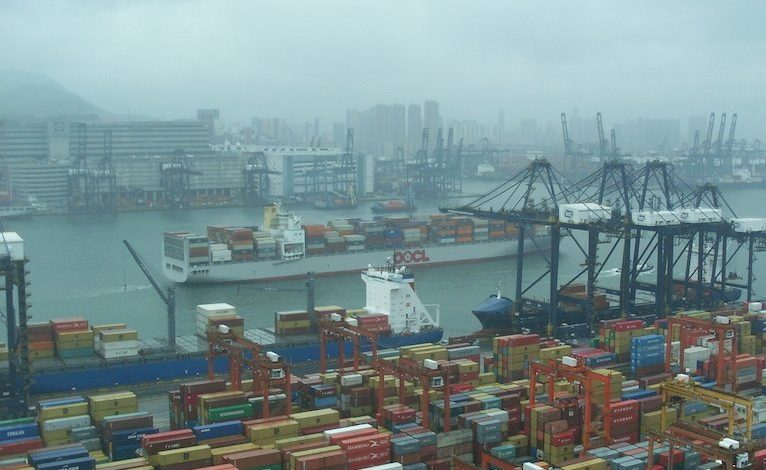One Belt, One Road and the Old Man and the Sea

On a recent trip to China to attend a summit and meetings regarding the One Belt, One Road (OBOR) I was reminded of the Hemingway classic, The Old Man and the Sea. Whilst the novel tells the tale of an old fisherman, my trip conjured up images of China (the old man) working and yeaning to recapture its past glory by reestablishing the Silk Road (the marlin) through changing supply chain and shipping dynamics through infrastructure (the sea). Just as Hemingway’s islanders had different interpretations of what transpired so to do we get differences of view regarding OBOR?
My observations of the Old Man and the Sea and its progress are as follows:
• There is mixed messaging regarding the role of Shanghai and Hong Kong as the maritime and professional services centre for OBOR. Whilst some discussion was held around Singapore’s role, most conversation highlighted the diminishing role Singapore will play, the decline in legal standards with a number of law firms previously based in the island state relocating to Hong Kong or back to Europe. Hong Kong is seen as having the network into China to resolve legal disputes that emerge along OBOR, particularly the use of arbitration and contract execution.
• When extrapolating the string of pearls as a subset of the maritime Silk Road, we already see that Singapore’s redundancy has been achieved with port facilities in Malaysia, Indonesia and Sri Lanka that allows Singapore to be bypassed. The next step is whether the Thai Canal is now pursued that would further enhance Hong Kong’s potential to become the maritime hub.
• The major disruptor to shipping will be the role played by rail, but there are a number of issues that need addressing for this to take full effect. One is the level of subsidy granted to state owned rail operators that enable freight rates to be $4,500 per 40ft container as well as bottlenecks in Europe dry ports to deal with a build-up of container traffic.
• Rail’s disruptor impact will be felt with a need for smaller ports rather than the current trends towards larger ones. Smaller ports are seen to be addressing business needs for more frequent deliveries so as to cut down on inventory holding costs. Singapore comes into the debate as people note that the island state pursued its strategic advantage by building ‘bigger’ and the new dynamic suggests smaller / flexible is the new song sheet.
• Adding to the mix are 3PL logistics providers who are working with the likes of Maersk to provide a fast freight service between the cities such as Shanghai and Europe, thus changing the requirements of marine ports and vessel size. The plan is to be able to provide 20 day shipping times as opposed to current 45 days. The rail providers are working on reducing current delivery of 15 days to fivedays. This has set up an interesting interface between the state run rail providers and privately owned 3PL providers.
• China’s GPS tracking systems are excellent, but what is required is a more dynamic RFID method for supply chain visibility. It would appear that this could be a draw back as the country clamps down on VPN access – an important tool used by independent contractors to do business. Furthermore the revolution of blockchain technology will be constrained without better and more open internet as doing business along OBOR is contractually / financially and administratively cumbersome. This would be a major distractor for doing business using the enhanced infrastructure.
Whilst it was agreed that OBOR is an important catalyst to improve logistics connectivity in the trade dynamic between West and East, there also appears to be cracks emerging within the ‘people to people’ objectives. A common theme was the lack of local involvement where major infrastructure has been built. Examples given include the lack of employment opportunities and participation as projects used Chinese contractors. This has built up resentment at the ground level, and one needs only look at the likes of Kayak Phu in Myanmar and Hamboanota Port in Sri Lanka.
Other related developments that are directing attention includes the increasing tensions between the India/Japan ‘Freedom Corridor’ infrastructure strategy and OBOR. Both build / locate duplicate infrastructure in the same regions providing an alternative but placing infrastructure projects at commercial risk. These come to a head with the increasing focus on Myanmar in general and its Kyauk Phyu region in particular. Both initiatives see this region as important to gain access to markets in Iran, Africa, Sri Lanka and Southeast Asia. Some have gone onto say that Myanmar is where ASEAN / OBOR and the Freedom Corridor converge.
Whilst Myanmar has strategic geopolitical importance, this will only be realised once its regional infrastructure is put in place. Finance will undoubtedly play a role as to which initiative will gain the advantage, however the ‘people to people’ / community engagement process is taking an increasingly important part in determining who will be given the green light. This is highlighted by Japan’s approach in the Thilawa SEZ in securing community support and now joining forces with India to gain influence in the Kyauk Phyu SEZ.
So what does this mean for the old man and the sea? Whilst China has many financial advantages, it can only secure its vision by placing greater emphasis on soft power. More action needs to be taken with regards local employment to ease tensions on large projects but this requires work on the people to people initiatives. Whilst shipping will be disrupted by rail, the speed at which it is depends on the speed of infrastructure development being overcome in time as well as dealing with the soft issues in a project. These soft issues can tear at the marlin such that when it is finally landed only a carcass remains.

Good stuff. Thanks. BTW, it’s not called OBOR. It’s BRI.